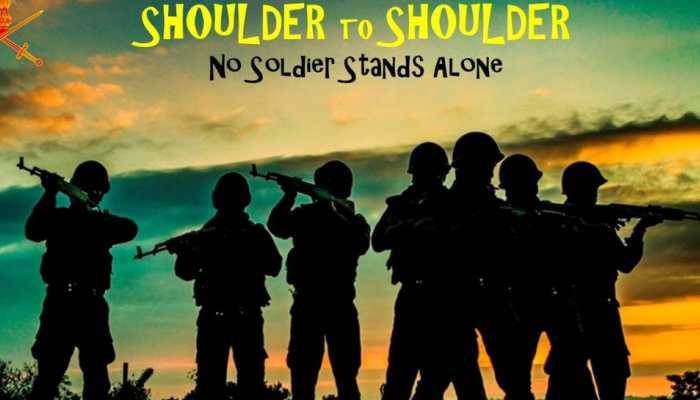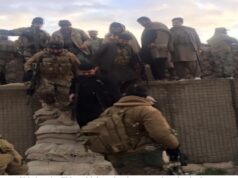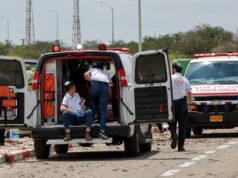Hero of 1971 War : Air Vice Marshal Chandan Singh, MVC Passes Away, PM And RM Pay Tribute

Former Indian Air Force fighter, transport and helicopter pilot, Air Vice Marshal Chandan Singh Rathore, one of the most decorated IAF officer, passed away at his home in Jodhpur at the age of 95. He is the only air warrior in IAF history to have been awarded MVC & VrC. Prime Minister Narendra Modi took to Twitter to share his condolences on the passing of AVM Rathore, citing him as a ‘valourous air warrior who contributed towards a stronger and safer India.’ Defence Minister Rajnath Singh soon followed suit, citing Rathore’s invaluable efforts in the Sino-Indian war of 1962 and the Indo-Pakistan war of 1971.
Among the most highly decorated officers in the Indian Air Force, 3460 F(P) AVM Rathore began his military career in 1941 as a Lieutenant in the famous Jodhpur Lancer, once commanded by his father Colonel Bahadur Singhji. He started his military career at 17 during WW-II as an officer of Jodhpur Lancers (by then a Mech Inf Rgt), serving with valour in battles of Iraq, Persia, Egypt and Palestine.
Following India’s independence in 1947, the ‘Lancers’ were merged with the President’s Body Guard and the Indian Army’s 61st Cavalry. Post WW2, Captain Chandan Singh, who had already volunteered for the Indian Air Force, due to his wartime fascination for the 3rd dimension, joined RIAF and was commissioned as a Flg Offr in General Duties branch on 27 Jul 1946. He was a thoroughbred Lion, ‘born to battle’. By 1948-49, he was proficient as a front line Hurricane and Spitfire combat pilot during the battle in J&K. Due to injury sustained in a Spit crash, he transferred to Dakotas transport aircrafts, and went on to formulate SoPs, leading from the front, Dakota transport air operations in Leh / Ladhak.
First to fly AN-12 in 61/62 after training in Russia, he once again formulated the SoPs, led from the front, AN-12 air operations in Leh / Ladhak prior to and during 62 war. He was awarded an Ati Vishist Seva Medal, first ever Squadron Leader to win one.
His citations read as under :
AVSM GoI19610126 Dte of Award 26 Jan 61
Sqn Ldr Chandan Singh was seconded from the Rajasthan State Forces to the Indian Air Force in the General Duties Branch with the rank of Flying Officer in 1946. He qualified as a service pilot in 1949. He was promoted Squadron Leader in 1957. He has devised new techniques for training young pilots in high altitude flying, and has been responsible for the selection of routes which have added to the safety of flights over hazardous mountains. He is one of our outstanding transport pilots.
He was the one who had led a 4 x AN-12s from Chandigarh, direct to Chushul, with AMX tanks, saving grace in 62 war in Ladhak. Regarded as one of the IAF’s most talented officers, on 20 October 1962, Squadron Leader Chandan Singh was tasked with a supply drop in the Chip Chap area in Ladakh, during the Sino-Indian war.
Having arrived at the drop zone, Singh noticed that the Indian outposts were under heavy fire from Chinese forces. With no regard for his own safety, Singh successfully managed to replenish the vital supplies of the Indian garrison despite his aircraft being struck 19 times by Chinese ground attacks. Singh’s bravery earned him the Vir Chakra, but it was not to be the last time the IAF would be witness to it. His Vir Chakra Citations read as under :
VRC Gazette of India, 16th February 1963 – No. 18-Pres/63., dated 26th January, 1963. Dte of Award 20 Oct 1962
On 20th October 1962, Squadron Leader Chandan Singh was detailed to carry out supply dropping in the Chip Chap area (DBO) in Ladakh (AN 12). On reaching the dropping zone, he noticed that the outposts were under heavy fire from the Chinese forces.
He successfully dropped vital supplies to our garrison although his aircraft (AN 12) was hit 19 times by enemy ground fire, Squadron Leader Chandan Singh displayed courage and devotion to duty in carrying out the task in complete disregard of his personal safety.
He continued flying several sorties a day throughout the 62 war, from Chandigarh to Leh and other locations in Ladhak, in the massive airlift during and after 62 war.
He was then selected as one of the three pioneers of Aviation Research Centre, trained by CIA in USA to fly U-2s, flew missions deep into Tibet from Charbatia. In 65 war he flew many covert missions into West Pak in ARC AN-12s. Further he spent 2 years in NDA (Squadron Commander Kilo Squadron) when Kilo Squadron went from zero to hero, Champion Squadron consistently, with high morale and no indiscipline.
During the India-Pakistan war of 1971, Group Captain Singh was commanding the Air Force Station in Jorhat having a squadron of fighters and two squadrons of Dakotas. Not wanting to sit on his butt during war, in addition to his duties as Station Commander IAF Jorhat, he opted to be a Sector Commander KILO FORCE reporting to Lt General Sagat Singh. As Commander Kilo Force, his job was training a Mukti Bahini force at Dhimapur, and also the nucleus of future Bangladesh Air Force (armed Chetaks, Otters & Daks). He personally flew deep penetration offensive operations into East Pakistan, a cavalier reporting to Gen Sagat Singh.
Under the leadership of Lieutenant General Sagat Singh ( another maverick borne to battle) Chandan Singh successfully planned and executed the airlifting of Army right across sylhet area to outskirts of Dacca.
Using his excellent rapport with COs of 110 Helicopter Unit (ex Kumbhigram), 105 HU (ex Chabua) and 111 HU (ex Hashimara, then commanded by Squadron Leader (later Air Marshal) Nanda Cariappa, son of the Field Marshal), helped in bringing under his command, 15 odd Mi-4s which then transported a brigade of 4 Corps all the way across the unfordable Meghna to Dacca. This helped Sagat singh to finish the liberation war in just 13 days (4 Corps actually reached outskirts of Dacca and began shelling it by morning of 12 Dec 71, in 9 days !!).
In early December, when Indian Army planned to conquer Dacca Chandan Singh oversaw the advancement of approximately 3,000 troops and 40 tons of equipment (including heavy guns) using his highly strained helicopter fleet.
The missions Singh undertook required meticulous planning and forethought, and guided by Lieutenant General Sagat Singh, Chandan Singh would personally carry out dangerous reconnaissance that consistently put his life in jeopardy, to identify where he could gain an advantage over the Pakistan forces.
On 7 December, Singh conducted eight helicopter airlift operations deep in enemy territory, believed to have been critical to the success of India’s campaign.
Following the events of 7 December, he went on to undertake an additional 18 missions, each time allowing India’s ground forces to advance closer to their objective.
Using Mi-4 helicopters beginning 9th Dec in an operation involving flying 110 sorties over 36 hours 311 brigade was airlifted across the Meghna. This was preceeded by the Sylhet airlift on Dec 7th. Mi-4 helicopters could carry 15 personnel. But 23 were carried.
In due course, rising meteorically, he became an AVM, the SASO Central Air Command, aged 55. A born soldier, suffering PTSD in chair borne jobs, he opted for a PMR on 30 Apr 1980, though he had just a few more miles to go, perhaps right to the top. After PMR, he lived a quiet, peaceful life, demanding no perks or privileges, at Jodhpur, till his natural death at 95+. In his life and in his death, he remains the brightest star in the Milky Way, still a ‘diamond in the sky’ saluted by all in IAF.
In fact, Lieutenant General Shammi Mehta, as quoted in Air Vice Marshal Arjun Subramaniam’s book, India’s Wars: A Military History, 1947 – 1971, quite categorically credits the fall of Dacca to the efforts of Lieutenant General Sagat Singh and Air Vice Marshal Chandan Singh when he says, “If there was no Sagat Singh and no Chandan Singh, there would have been no Dacca. ”On 26 January, 1972, Chandan Singh Rathore was awarded India’s second highest military honour, the Maha Vir Chakra, for his gallantry and leadership.
The MVC citation of Group Captain Chandan Singh AVSM, Vr C reads as under :
MVC Gazette of India, 12th February 1972 – No.20 – Pres/72 dated 20th January 1972. Dte of Award : 7 Dec 71
Group Captain Chandan Singh, AVSM. VRC is the officer commanding of an Air Force Station in the East [Air Force Station, Jorhat]. During the war with Pakistan, he was in the forefront of the air operations conducted for the liberation of Bangla Desh. Group Captain Chandan Singh was also responsible for the planning and execution of the special helicopter operations to airlift two companies of troops of the Sylhet area.
When it became necessary to overcome the obstacles in the advance of the army towards Dacca, he planned and executed the move of nearly 3,000 troops and 40 tons of equipment and heavy guns with the extremely limited helicopter force at his disposal.
This operation entailed landing the troops and equipment near heavily defended areas by night. Prior to each mission he personally carried out reconnaissance in the face of heavy enemy fire.
On the night of December 7/8 he flew eight missions, deep into enemy territory to supervise the progress of the helicopter airlift and to guide and inspire his pilots who were facing heavy opposition from ground tire.
Later he undertook a further 18 missions in the same operation, always leading the landings at new places. On many occasions his helicopter was hit by ground fire, but this did not deter him from further missions.
The success of this major airborne operation contributed significantly to the fall of Dacca and the capitulation of tie Pakistan armed forces, in Bangla Desh.
The leadership, drive and determination coupled with the bravery shown by Group Captain Chandan Singh over an extended.period of time, are in the highest traditions of the Air Force.
With operating base at Agartala, there were four Special Heliborne Operations conducted under direct supervision of Chandan.
1) Kalura to Silhet,
2) Bhramanbaria to Raipura,
3) Bhramanbaria to Narsingdi, and
4) Daudkandi to Baidya Bazar,
continuously round the clock from 7 to 15 Dec 71.
The MVC for Chandan was forwarded by Gen Sagat Singh during the first and most ferocious SHBO to Sylhet, where he remained aloft in the Kilo Force armed Chetak repeatedly, capping, observing and providing close fire support using rockets and a sideward firing 20 mm machine gun, along with then Flt Lt Singla (later Air Cmde, VrC). Hence the citation only covers part of the contribution of Chandan in 71 war.
Before each SHBO, he personally went and reconnoitred the condition and threat scenario, and more often than not was in the dicky of the lead hc to inspire the pilots. He also flew with Sagat Singh and was once told to go on his own and take the surrender of Pakis single handed !!!!
Some of the finer highlights of the Helicopter utilization is as under :
* Does not include causalities evacuated or sorties flown behind enemy lines for reconnaissance and communication.
* The Mi-4 at best could carry 600-700 kg or 6 -7 men. But as the experience increased and fuel reduced, there were pilots who carried 16 to 23 soldiers at a time, or a whole field gun !!
* A conservative estimate of no of sorties flown to and fro = 2 x 2575 sorties or about 430 sorties per hc or average or approx. 47 sorties / hc/day; with each leg < 15- 20 mts (11-12 hrs in 24 hrs), using more or less same set of aircrew (Plt, Co-Plt & Flt Eng).
AVM Chandan Singh was healthy and fit all his life, except minor ailment before his passing. The last of iconic air warriors of yore has passed away into history. He lived and died unpretentious, non-ostentatious, simple healthy life; very friendly and fun loving, never demanding anything from others that he himself did not do from the front. He now rests in peace, his praise well sung and loved by a large number of us, whom he touched, coached, mentored and led from the front. Of his life and times, there is much to recount.




